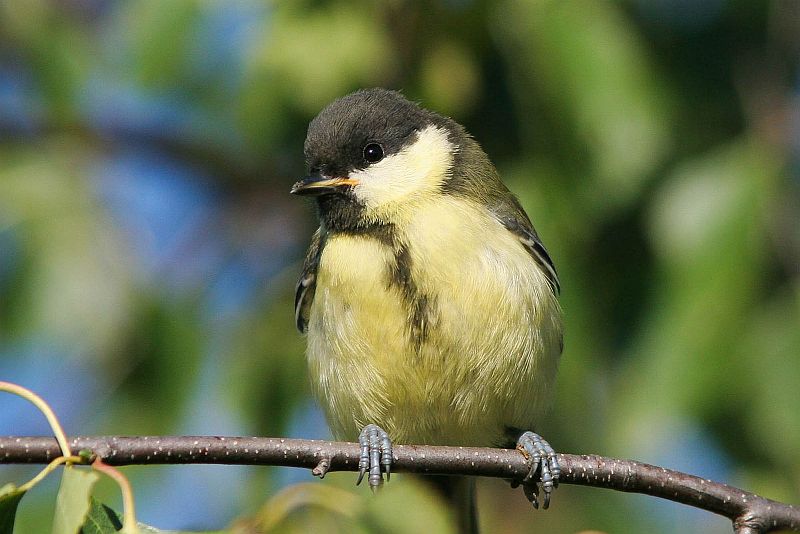Great Tit Year science news edited by Marko Mägi, bird ecologist at University of Tartu
Translation Liis
The first clutches of great tit chicks have left the nests. However, few of them will reach a reproductive age, because during the week after leaving the nest a great part will fall victims to predators. Having reached adult age the chances of living on further are relatively great and so it is extremely important precisely in the first weeks of life to make the right decisions outside the nesr and keep alive.
The first decision that the fledged chicks have to make is the time of leaving the nest – to leave in early morning, at mid-day or even at dusk? Is there a ”best time” for leaving the nest?
Until now we have been limited to the observation that chicks rather leave in the morning. Researchers have theorized widely about the nest departure time but the means to study the precise effect of the time of departure have been limited – that a researcher might sit at the nest monitoring it for 24 hours is not feasible; the risk of happening to miss something important would be great and the proximity of a human might influence the behaviour of the chicks in the nest.

.
Juvenile great tit / Photo: Uku Paal
In the Netherlands microchips were used to find out the exact time of leaving the nest. Similarly to implanting microchips on pets, 14 days old great tit chicks were equipped with chips and in the nestbox chip sensors were installed and so it could be seen at what time a chick left the nest. The following year all nesting birds were caught thus finding out the survival of the chicks. Having visited the observation area myself I can confirm that since there are only isolated broadleaf tree stands and the great tits without exception nest in nestboxes, the probability that birds would leave the area because of lack of a suitable habitat is small.
Of the 196 chicks from the 26 clutches provided with chips 15 (8,4%) returned next year to nest which is the average of the investigation area. As believed earlier 71% of the chicks left the nests very early in the morning. Although also the body measurements of the chicks, such as weight and wing length, were also studied, departure time from the nest was the only significant factor influencing the probability of a chick’s survival – the chance for survival was greater for chicks who had left the nest early. Time the time of departure compared to that of the siblings in the clutch was also important – those who had left the nest earlier than their siblings had a higher survival percentage.
The study described above is the first real evidence of the connection between early morning departure from nest and the success of the individual. What provides this advantage to the chicks leaving earlier is not known in detail but evidently it is the experience that the chicks manage to gather in the first day – being out from the nest a longer time in daylight makes it possible to become better acquainted with the surroundings and precisely this may provide a significant advantage in finding a safe place for the night. For the chicks having left the nest hollow later this period becomes briefer and they are more likely to perish in the first night.
So the old saying ”It is the early bird that catches the worm …”, can be elaborated from the investigation results with ”… and survives”
Radersma R, Komdeur J, Tinbergen JM, 2015. Early morning fledging improves recruitment in Great Tits Parus major. Ibis 157: 351-355. DOI: 10.1111/ibi.12230


